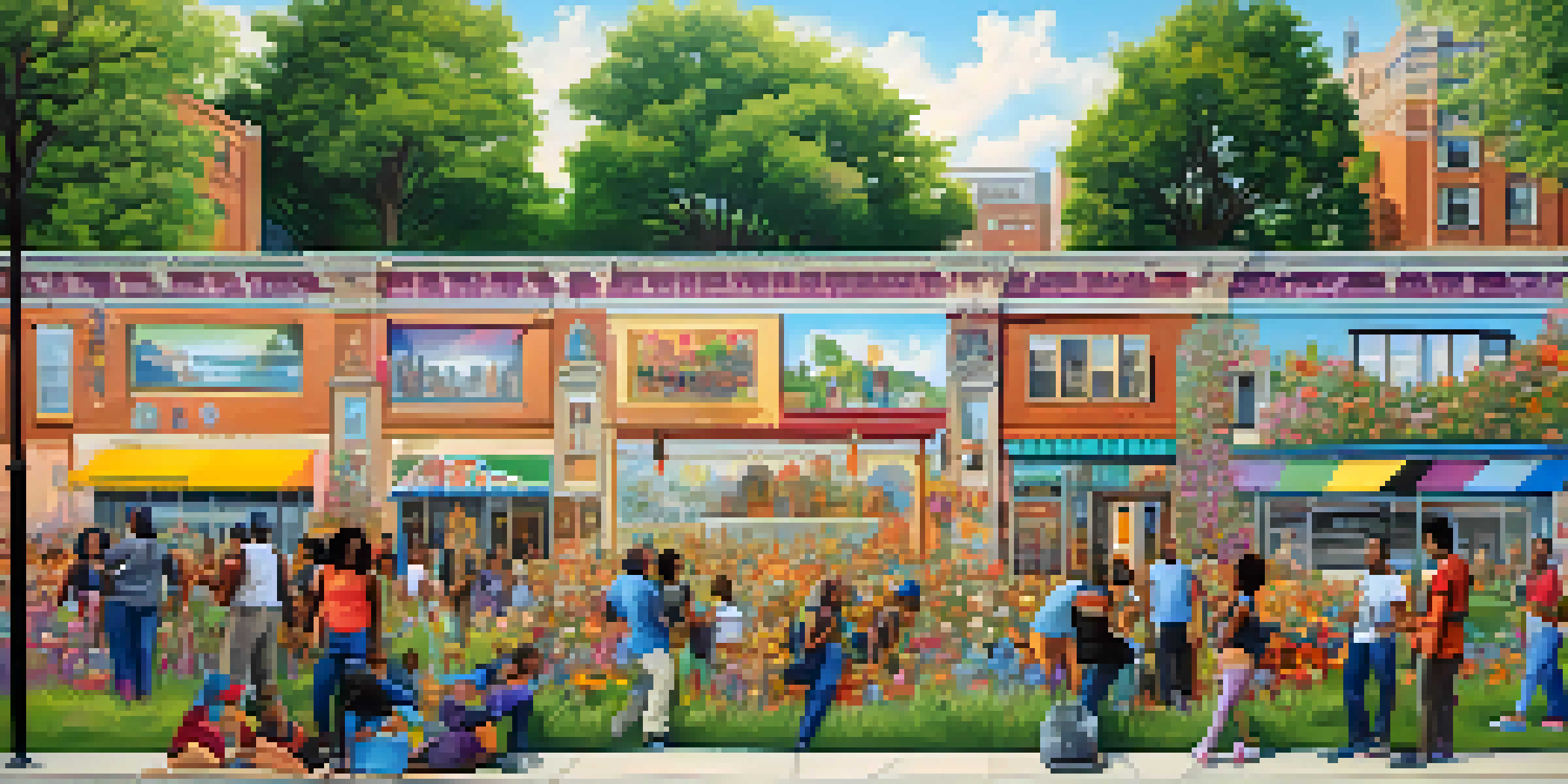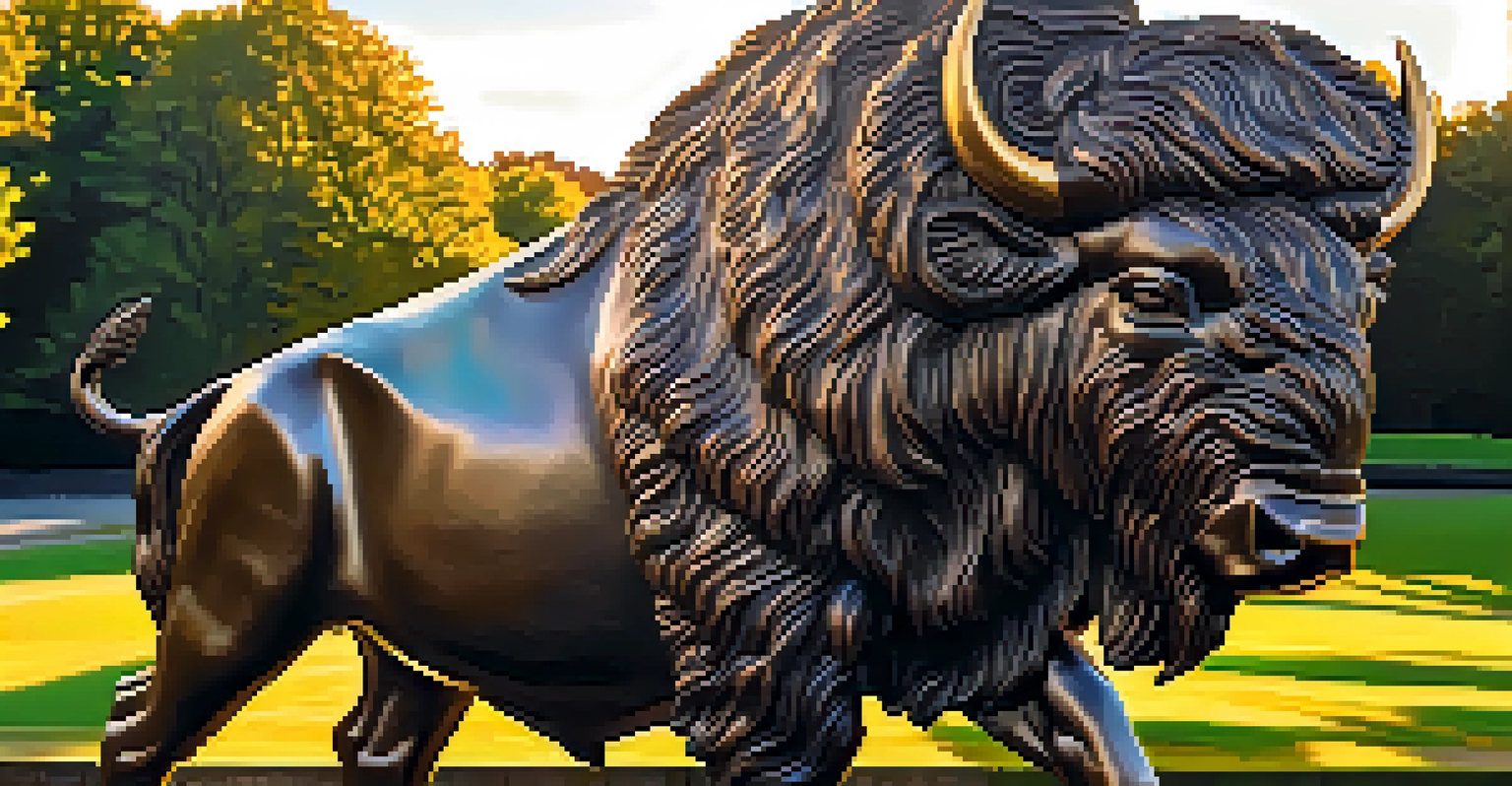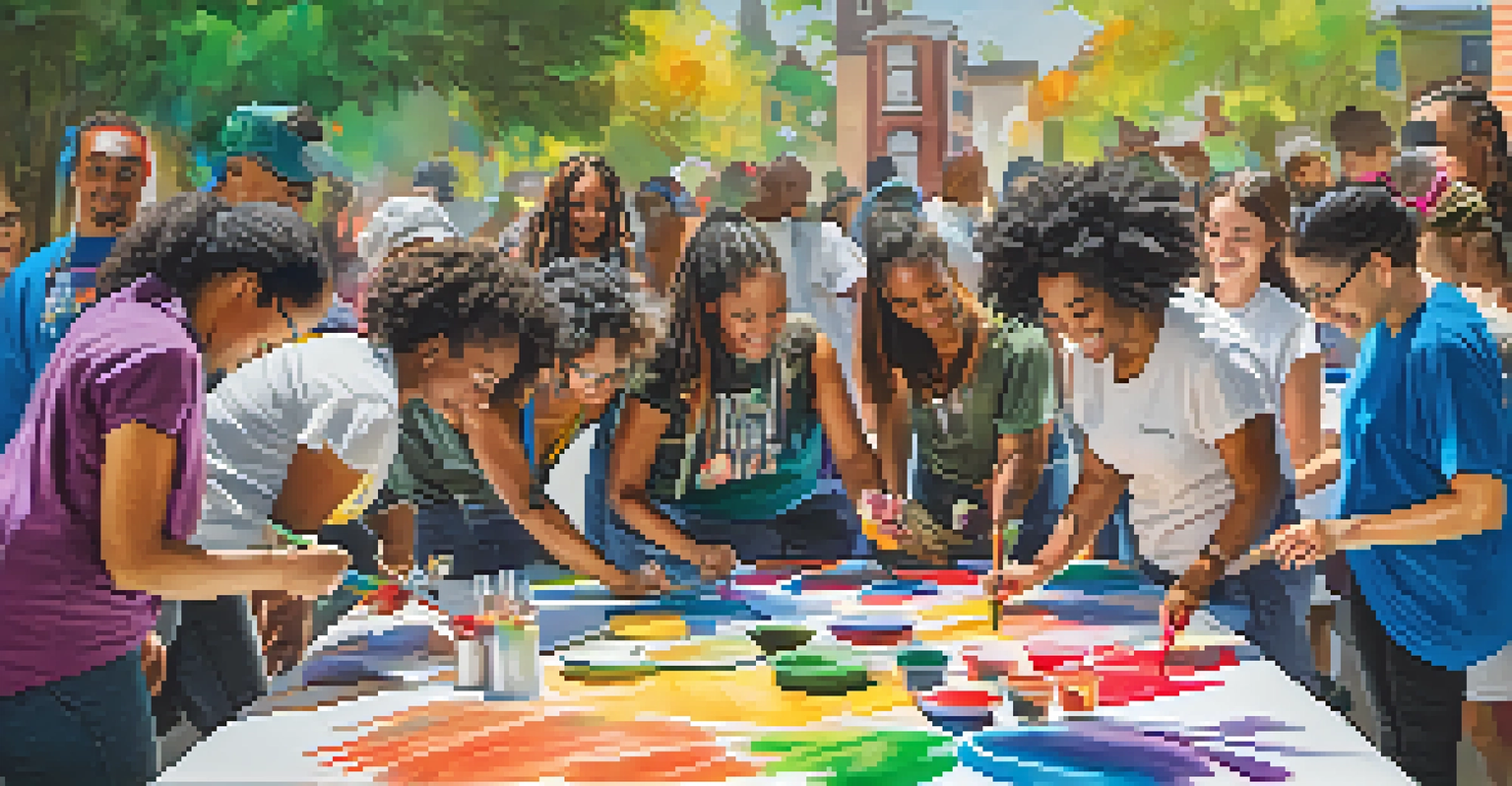The Role of Public Art in Shaping Buffalo's Cultural Identity

Understanding Public Art and Its Importance
Public art encompasses a wide range of artistic expressions found in communal spaces. It's more than just decoration; it serves as a reflection of a community's values, history, and aspirations. In Buffalo, public art plays a crucial role in enhancing the city's cultural identity and fostering a sense of belonging among residents.
Public art is a means of communication, a way for people to connect and engage with their community.
From sculptures and murals to installations and performances, public art is accessible to everyone, breaking down barriers that traditional art forms might impose. This accessibility invites diverse audiences to engage with art on their terms, sparking conversations and connections among different groups. By showcasing local talent and themes, public art becomes a dynamic part of the community's storytelling.
Moreover, public art can transform ordinary spaces into extraordinary places. A vibrant mural on a once-blank wall can uplift a neighborhood, while a thought-provoking sculpture can inspire dialogue. In Buffalo, these artistic interventions not only beautify the environment but also encourage people to reflect on their shared experiences and the cultural narratives that shape their lives.
Historical Context of Buffalo's Public Art Scene
Buffalo has a rich history of public art that dates back to the early 20th century. The city's architectural landscape, featuring works by renowned figures like Frank Lloyd Wright, laid a foundation for artistic expression in public spaces. Over the years, various movements and community initiatives have emerged, each contributing to the evolving narrative of Buffalo’s cultural identity.

In the 1960s and 1970s, the rise of community art programs marked a significant shift towards involving local artists in public projects. This grassroots approach not only fostered creativity but also empowered residents to take ownership of their surroundings. Today, the legacy of these movements is evident in the diverse range of public art projects that celebrate Buffalo's unique heritage.
Public Art Enhances Community Identity
Public art reflects a community's values and fosters a sense of belonging among residents.
As the city continues to grow and change, new public art initiatives reflect contemporary issues and aspirations. From addressing social justice themes to celebrating cultural diversity, Buffalo’s public art remains a living testament to its history while paving the way for future generations to contribute their voices to the city's ongoing story.
Key Public Art Projects in Buffalo
Buffalo is home to a plethora of noteworthy public art projects that have become integral to its cultural landscape. One standout project is the 'Buffalo Mural Project,' which has transformed various neighborhoods into open-air galleries. These murals not only showcase the talents of local artists but also tell the stories of the communities they inhabit, fostering a sense of pride and identity.
Art is not what you see, but what you make others see.
Another significant initiative is the 'Queen City Mural Project,' which aims to beautify underutilized spaces while promoting social engagement. Through collaborations with local schools and organizations, this project encourages students and community members to participate in the creative process, making art a collective experience. The result is a vibrant tapestry that reflects Buffalo's diversity and resilience.
Additionally, installations like the 'Bison Sculpture' in Delaware Park serve as iconic symbols of the city’s heritage. These art pieces often become beloved landmarks, attracting visitors and residents alike. By integrating art into the fabric of public spaces, Buffalo not only enhances its visual appeal but also strengthens its cultural identity.
The Role of Public Art in Community Engagement
Public art has a remarkable ability to engage communities and foster collaboration. By involving local residents in the creation process, art projects can reflect the unique perspectives and experiences of those who live there. This participatory approach promotes a sense of ownership and pride, turning art into a catalyst for community connection.
For instance, workshops and community meetings often accompany public art initiatives, allowing residents to voice their ideas and concerns. This dialogue not only enriches the artistic outcome but also builds relationships among community members. As people come together to contribute to a shared vision, they cultivate a stronger sense of belonging and civic pride.
Tourism Boosted by Artistic Attractions
Buffalo's vibrant public art scene attracts tourists, enhancing the visitor experience and benefiting local businesses.
Moreover, public art can address pressing social issues and bring awareness to important causes. Art installations that tackle themes like inequality, environmental sustainability, or mental health can spark conversations that lead to meaningful change. In Buffalo, these artistic expressions serve as powerful tools for advocacy, encouraging dialogue and inspiring action within the community.
Public Art as a Tourist Attraction
Buffalo's vibrant public art scene has also become a significant draw for tourists. Visitors often seek out the city’s murals, sculptures, and installations as part of their exploration. This artistic allure not only enhances the visitor experience but also contributes to the city’s economy through increased foot traffic in neighborhoods.
For example, art walks and guided tours have emerged, showcasing Buffalo's public art treasures while educating visitors about the artists and their inspirations. These experiences create memorable moments for tourists and encourage them to share their discoveries on social media. As a result, Buffalo's reputation as an arts destination continues to grow, attracting new visitors eager to engage with the city's cultural offerings.
Furthermore, the economic impact of public art extends beyond tourism. Local businesses often benefit from the increased visibility and foot traffic that public art generates. Cafes, shops, and galleries thrive in neighborhoods where art flourishes, creating a vibrant ecosystem that supports both artists and entrepreneurs. In this way, public art not only beautifies the city but also plays a vital role in its economic revitalization.
Challenges Faced by Public Art Initiatives
Despite its many benefits, public art initiatives in Buffalo face several challenges. Funding is often a significant hurdle, as securing financial support for projects can be a daunting task. Many artists and organizations rely on grants, sponsorships, or crowdfunding to bring their visions to life, which can limit the scope and reach of public art projects.
Additionally, the issue of maintenance and preservation comes into play. Weather conditions, vandalism, and neglect can threaten the longevity of public art pieces. It's essential for the community and local government to collaborate on strategies to protect these artworks, ensuring they remain vibrant and relevant for future generations to enjoy.
Inclusivity Shapes Art's Future
The future of public art in Buffalo emphasizes inclusivity and technological advancements, inviting diverse voices and innovative expressions.
Finally, public art can sometimes spark controversy or debate within a community. Different perspectives on artistic expression and its appropriateness can lead to disagreements. Navigating these discussions with sensitivity and openness is crucial to fostering a healthy dialogue about the role of art in public spaces and ensuring that diverse voices are heard.
The Future of Public Art in Buffalo
Looking ahead, the future of public art in Buffalo appears promising as new initiatives continue to emerge. With a growing emphasis on inclusivity and representation, artists from diverse backgrounds are increasingly invited to contribute to the city's artistic landscape. This shift not only enriches the public art scene but also ensures that a wide range of experiences and stories are celebrated.
Moreover, advancements in technology are opening up new avenues for public art. Augmented reality installations, digital projections, and interactive pieces are gaining popularity, allowing artists to engage audiences in innovative ways. These developments can create immersive experiences that invite deeper connections between the art and the community.

As Buffalo continues to evolve, public art will remain a vital component of its cultural identity. By embracing collaboration, creativity, and inclusivity, the city can cultivate an artistic environment that reflects its dynamic spirit and resonates with both residents and visitors alike.